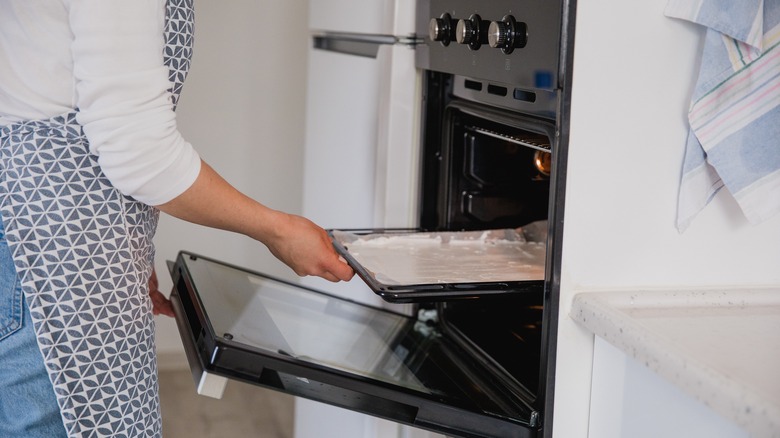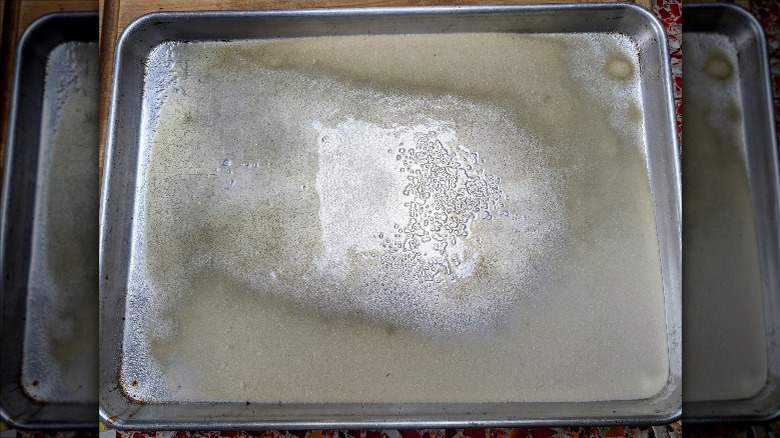Use Sugar To Figure Out Where Your Oven's Hot And Cold Spots Are
Baking is a precise science, and not only when it comes to measuring ingredients accurately. Uneven oven temperature can significantly impact the outcome of your culinary creations, as anyone who's had a sunken cake or half-baked sheet pan of cookies can attest to. But by conducting a simple experiment with a baking pan of sugar in your oven, you can discover hot spots and understand the nuances of your oven's temperature distribution.
This bit of kitchen magic works because white sugar melts at a predictable temperature, roughly 366 degrees Fahrenheit. If you spread sugar evenly on a cookie sheet and bake it in a preheated oven that's hotter than sugar's melting point, you might find that some parts of the sugar are not only melted but browned, while other areas didn't melt at all, and that gives you a great idea of where those hot and cold spots are. It's worth noting that many home ovens are not properly calibrated, so you may also learn that your oven runs too hot or too cold, depending on how the sugar reacts.
Checking oven temperatures is critical for baking
To begin, preheat your oven to 375 degrees Fahrenheit. Next, grab a flat pan baking sheet and line it with aluminum foil or parchment. Spread a cup of granulated sugar across the surface and lightly shimmy the pan to even the sugar out. Place the pan in that preheated oven and bake it for 10 minutes. We recommend checking it at the 5-minute mark, just in case your oven runs very hot — if so, you'll already see melting, but if there's no change, keep baking for the remaining 5 minutes.
At the end of 10 minutes, remove the baking sheet from the oven carefully and take a look at the sugar. If there are areas where the sugar did not melt, you know those are the colder areas of your oven. If you have brown, melted spots, that's where your oven tends to get overheated. You can use that information to your advantage, knowing you can push a pastry that needs a bit more browning to the hot areas, or pull a cake that's browning too fast to a cooler area. You'll also understand why we recommend rotating your cookie sheets during baking! Lastly, if there's no melting at all, your oven temperature is lower than the set temperature. On the flip side, a fully brown, melted pan of sugar shows that your oven runs hot.

